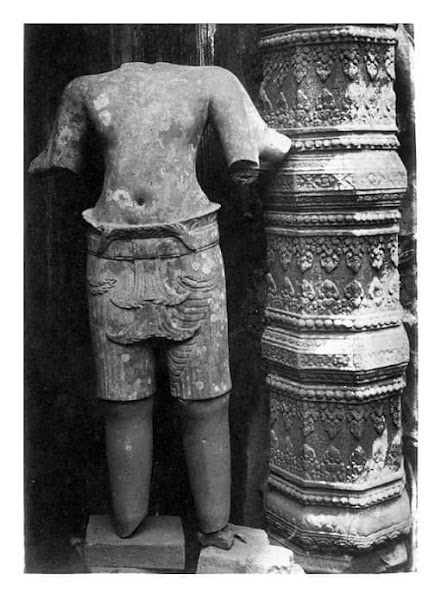Sculpture from the Angkor National Museum:
A lot of the statuary from the Koh Ker complex of temples – constructed in the second quarter of the tenth century under King Jayavarman IV when the kingdom’s capital was moved 100 kilometers northeast of Angkor for nearly twenty years – were of larger-than-life size, as we can see today at the National Museum in Phnom Penh, where many of these substantial sculptures are proudly displayed. However, the sheer size of the Koh Ker complex, numbering more than 70+ temples, meant that many sites had their fair share of normal sized statues, human height if you like, and this damaged torso of a male divinity, most likely Vishnu, which is today housed at the Angkor National Museum, is exactly that. It was identified by Henri Parmentier, leaning against the false door of the southern brick tower at Prasat Pram, the first temple you encounter on arrival at the complex, which has five shrines, two of which are atmospherically wrapped in tree roots, in February 1935 and photographed in-situ. The original sculpture would’ve had four arms, but father time has not been kind to the torso, which is without its arms, feet and most tellingly, his head. The decoration of the pleated sampot is reminiscent of the previous art of Bakheng, from the end of the ninth century, with a wide belt and knot, a folded-over top edge (but not the excessive flap seen on many Koh Ker images), a double anchor-form panel at the front and attractive pockets of fabric embellishing the figure. The sculpture is powerful and beautifully polished at the same time, despite missing some of its key elements. After spending part of its life at the Angkor Conservation depot once it was found by Parmentier, it enjoyed a stint at the National Museum in Phnom Penh before being transferred for display at the Angkor National Museum in 2007, where it resides today.















No comments:
Post a Comment